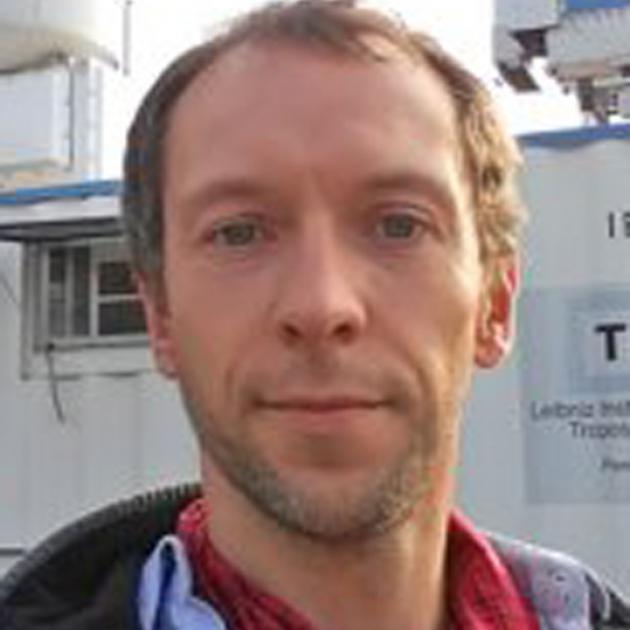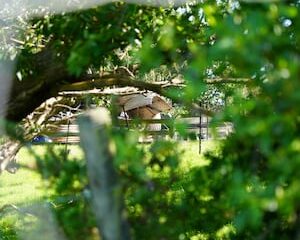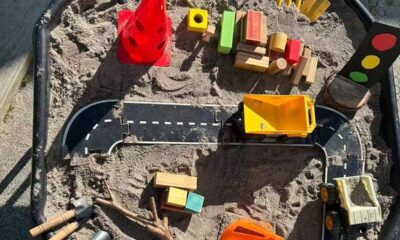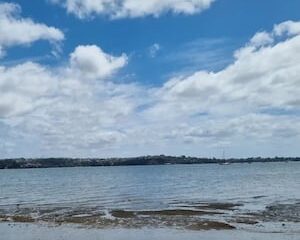Science
Researchers Launch Laser Project to Study Aerosols in New Zealand

A new research initiative, known as the goSouth-2 project, is set to launch on September 3, 2023, at the MetService site near Invercargill Airport in New Zealand. This project aims to investigate how aerosols—tiny airborne particles—affect atmospheric conditions. The study is a collaborative effort between institutions in Germany and New Zealand, including the Meteorological Institute of the University of Leipzig, the Leibniz Institute for Tropospheric Research (TROPOS), and New Zealand’s MetService, University of Canterbury, and The Air Quality Collective.
Researchers from TROPOS are currently setting up equipment at the site as they prepare for the project’s commencement. Five team members are actively involved in establishing the necessary infrastructure for data collection.
The Role of Aerosols in Cloud Formation
According to Dr. Patric Seifert, a researcher at TROPOS, aerosols enter the atmosphere from various sources, including both land and sea. These particles encompass a range of materials such as salt, dust, pollen, and smoke from natural or anthropogenic sources. They play a crucial role in cloud formation by serving as nuclei to which cloud droplets can adhere.
“The less aerosol particles are available, the less cloud particles can form, and vice-versa,” Dr. Seifert explained. This relationship is particularly significant in the unique atmospheric conditions found at the southern tip of New Zealand, where air masses can vary dramatically based on their origins. When air flows from the Antarctic, the atmosphere tends to be cleaner, while air arriving from Australia often carries higher levels of aerosols.
By examining the different aerosol concentrations in these air masses, researchers aim to gain insights into how clouds respond to fluctuations in aerosol levels.
Addressing Gaps in Atmospheric Models
Current atmospheric and climate models have shown less accuracy in simulating cloud behavior over the Southern Ocean compared to the Northern Hemisphere. Dr. Seifert indicated that the discrepancy may be linked to variations in aerosol levels between the two hemispheres, with the Northern Hemisphere generally exhibiting higher pollution levels and consequently more data availability for modeling.
Invercargill serves as an ideal location for this research due to its logistical advantages, including the necessary support for operating technical equipment and accommodating staff. The MetService has already established long-term observational capabilities at the site, including weather balloon soundings, precipitation observations, and measurements of solar and thermal radiation.
Though the primary instruments for data collection are land-based, observers near Invercargill Airport might notice a green laser beam in the sky. “Our lidar systems emit laser pulses to investigate the aerosols,” Dr. Seifert noted. The presence of this fixed beam has been communicated to airport personnel to ensure awareness during the study.
In addition to lidar technology, researchers will utilize radar systems to study clouds and precipitation patterns comprehensively. The TROPOS team plans to remain on-site for a period of 18 months, while a group of approximately 15 researchers will analyze the collected data in Germany.
This research follows the goSouth-1 study, which took place in 2022 near Pahia, approximately 50 kilometers from Invercargill. That initial project provided foundational data but utilized less equipment than the current endeavor.
The insights gained from the goSouth-2 project may contribute significantly to understanding atmospheric dynamics, particularly in a region where the interplay between aerosols and clouds remains underexplored.
-

 World1 week ago
World1 week agoPrivate Funeral Held for Dean Field and His Three Children
-

 Top Stories2 weeks ago
Top Stories2 weeks agoFuneral Planned for Field Siblings After Tragic House Fire
-

 Sports3 months ago
Sports3 months agoNetball New Zealand Stands Down Dame Noeline Taurua for Series
-

 Entertainment3 months ago
Entertainment3 months agoTributes Pour In for Lachlan Rofe, Reality Star, Dead at 47
-

 Entertainment2 months ago
Entertainment2 months agoNew ‘Maverick’ Chaser Joins Beat the Chasers Season Finale
-

 Sports3 months ago
Sports3 months agoSilver Ferns Legend Laura Langman Criticizes Team’s Attitude
-

 Sports4 weeks ago
Sports4 weeks agoEli Katoa Rushed to Hospital After Sideline Incident During Match
-

 Politics2 months ago
Politics2 months agoNetball NZ Calls for Respect Amid Dame Taurua’s Standoff
-

 World2 weeks ago
World2 weeks agoInvestigation Underway in Tragic Sanson House Fire Involving Family
-

 Top Stories2 weeks ago
Top Stories2 weeks agoShock and Grief Follow Tragic Family Deaths in New Zealand
-

 Entertainment3 months ago
Entertainment3 months agoKhloe Kardashian Embraces Innovative Stem Cell Therapy in Mexico
-

 World4 months ago
World4 months agoPolice Arrest Multiple Individuals During Funeral for Zain Taikato-Fox




















